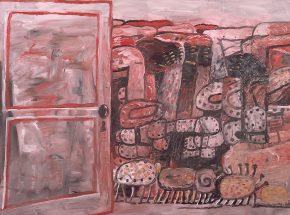

Stuart Davis (December 7, 1892–June 24, 1964), was an early American modernist painter. He was well known for his Jazz influenced, proto pop art paintings of the 1940s and 1950s, bold, brash, and colorful as well as his ashcan pictures in the early years of the 20th century.
He was born in Philadelphia to Edward Wyatt Davis and Helen Stuart Davis. His parents both worked in the arts. His father was the art editor of the Philadelphia Press while his mother was a sculptor. Davis studied painting, and art under Robert Henri, the leader of the early modern art group the Eight; he was one of the youngest painters to exhibit in the controversial Armory Show of 1913.
Exposed at this exhibition to the work of such artists as Vincent van Gogh and Pablo Picasso, Davis became a committed “modern” artist and a major exponent of cubism and modernism in America.
He was represented by Edith Gregor Halpert at the Downtown Gallery in New York City. He is probably most famous for his Hard-edge paintings, his abstract still lifes and landscapes; his use of contemporary subject matter such as cigarette packages, spark plug advertisements and the contemporary American landscape make him a proto-Pop artist. Among his ashcan paintings is Chinatown (1912), set in Lower Manhattan. A black cat in the picture represents a promiscuous woman who is depicted nearby dressed in black and standing next to trash cans in a seedy neighborhood.
Davis died of a stroke in New York on June 24, 1964, aged 71.
www.en.wikipedia.org/wiki/Stuart_Davis_(painter)


